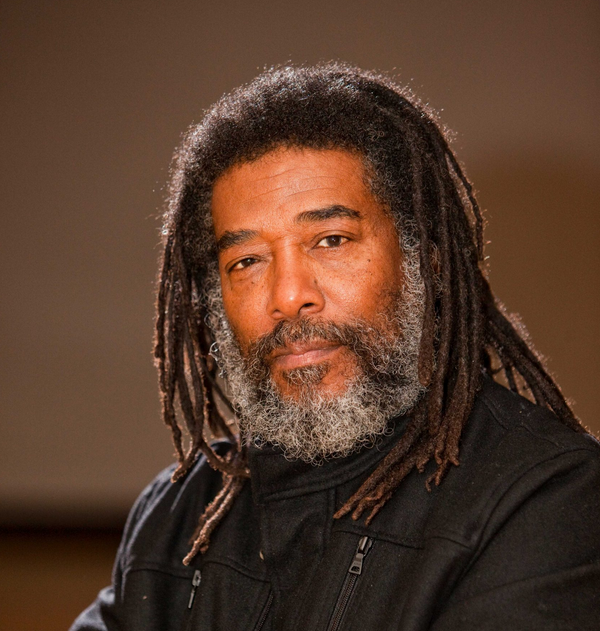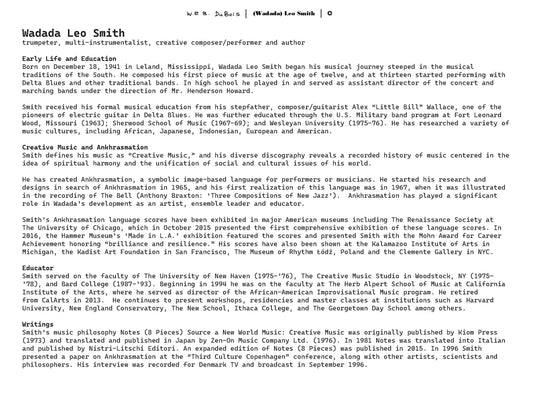Collection: Smith, Wadada Leo

Early Life and Education
Born on December 18, 1941 in Leland, Mississippi, Wadada Leo Smith began his musical journey steeped in the musical traditions of the South. He composed his first piece of music at the age of twelve, and at thirteen started performing with Delta Blues and other traditional bands. In high school he played in and served as assistant director of the concert and marching bands under the direction of Mr. Henderson Howard.
Smith received his formal musical education from his stepfather, composer/guitarist Alex “Little Bill” Wallace, one of the pioneers of electric guitar in Delta Blues. He was further educated through the U.S. Military band program at Fort Leonard Wood, Missouri (1963); Sherwood School of Music (1967-69); and Wesleyan University (1975- 76). He has researched a variety of music cultures, including African, Japanese, Indonesian, European and American.
Creative Music and Ankhrasmation
Smith defines his music as “Creative Music,” and his diverse discography reveals a recorded history of music centered in the idea of spiritual harmony and the unification of social and cultural issues of his world. He has created Ankhrasmation, a symbolic image-based language for performers or musicians. He started his research and designs in search of Ankhrasmation in 1965, and his first realization of this language was in 1967, when it was illustrated in the recording of The Bell (Anthony Braxton: ‘Three Compositions of New Jazz’). Ankhrasmation has played a significant role in Wadada’s development as an artist, ensemble leader and educator.
Smith’s Ankhrasmation language scores have been exhibited in major American museums including The Renaissance Society at The University of Chicago, which in October 2015 presented the first comprehensive exhibition of these language scores. In 2016, the Hammer Museum’s ‘Made in L.A.’ exhibition featured the scores and presented Smith with the Mohn Award for Career Achievement honoring “brilliance and resilience.” His scores have also been shown at the Kalamazoo Institute of Arts in Michigan, the Kadist Art Foundation in San Francisco, The Museum of Rhythm Łódź, Poland and the Clemente Gallery in NYC.
Educator
Smith served on the faculty of The University of New Haven (1975-’76), The Creative Music Studio in Woodstock, NY (1975-’78), and Bard College (1987-’93). Beginning in 1994 he was on the faculty at The Herb Alpert School of Music at California Institute of the Arts, where he served as director of the African-American Improvisational Music program. He retired from CalArts in 2013. He continues to present workshops, residencies and master classes at institutions such as Harvard University, New England Conservatory, The New School, Ithaca College, and The Georgetown Day School among others.
Writings
Smith’s music philosophy Notes (8 Pieces) Source a New World Music: Creative Music was originally published by Kiom Press (1973) and translated and published in Japan by Zen-On Music Company Ltd. (1976). In 1981 Notes was translated into Italian and published by Nistri-Litschi Editori. An expanded edition of Notes (8 Pieces) was published in 2015. In 1996 Smith presented a paper on Ankhrasmation at the “Third Culture Copenhagen” conference, along with other artists, scientists and philosophers. His interview was recorded for Denmark TV and broadcast in September 1996.






